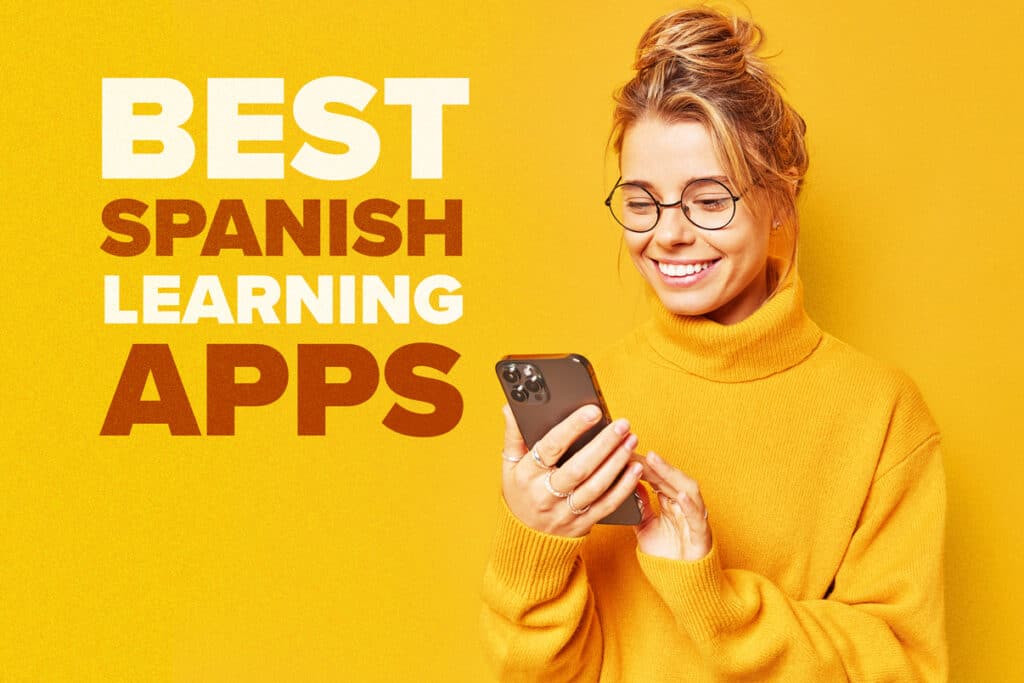
Our 20 Favorite Apps to Learn Spanish in 2024 [By Real Language Learners]
Learning Spanish doesn’t have to be all work and no play!
With all the apps available these days, there’s plenty to help make Spanish learning more fun.
But which apps are really worth the download?
I tried loads of different platforms to find out, so read on to see the 20 best apps to learn Spanish!
Contents
- 1. Best for Staying Motivated: Duolingo
- 2. Best for Learning with Authentic Media: FluentU
- 3. Best for Natural Language Acquisition: Rosetta Stone
- 4. Best for Vocab Retention: Memrise
- 5. Best for Conversational Application: Pimsleur
- 6. Best for Everyday Spanish: MosaLingua
- 7. Best for Speaking Practice: Busuu
- 8. Best for Quick Study: Drops
- 9. Best for Variety: LingQ
- 10. Best for Conversation Practice: Cudu
- 11. Best for Travelers: SpeakEasy
- 12. Best for Gamified Learning: ClozeMaster
- 13. Best for Reading Practice: Beelinguapp
- 14. Best for Language Help: HiNative
- 15. Best for Visual Learners: Mondly
- 16. Best for AI-Personalized Instruction: Lingualia
- 17. Best for Pronunciation: Speechling
- 18. Best for Learning Grammar: LingoDeer
- 19. Best for Spaced Repetition: Brainscape
- 20. Best for General Translating: SpanishDict Translator
- FAQs About The Best Apps to Learn Spanish
Download: This blog post is available as a convenient and portable PDF that you can take anywhere. Click here to get a copy. (Download)
For this post, we focus on some of the most widely available apps and big names. If you want to discover even more apps, this video from the FluentU YouTube channel gives some options that are lesser—known.
1. Best for Staying Motivated: Duolingo
Price: Free ($ for Duolingo Plus)
Summary: Duolingo is a popular gamified language learning app that will help you learn vocabulary and pronunciation in a fun and simple way.
Duolingo is a game-like app that progresses through different themes and teaches you basic vocabulary.
Exercises include translation, matching, multiple-choice questions, pronunciation checked by speech recognition, rearranging words into a sentence and more.
Read our full Duolingo review here.
| Pros | Cons |
|---|---|
| Teaches the most important vocabulary in a language | It can get very repetitive over time |
| Lessons are short enough to be finished in five minutes | Some of the sample sentences are weird |
2. Best for Learning with Authentic Media: FluentU
Price: $$ (free trial available)
Summary: FluentU teaches Spanish with authentic videos like movie clips, music videos, inspirational talks and other content made by and for native speakers.
Every video on FluentU is equipped with interactive subtitles to aid your understanding of what you see and hear, as well as other tools like personalized flashcards and quizzes to help reinforce your learning.
By watching native speakers, you can pick up on how Spanish is actually used.
| Pros | Cons |
|---|---|
| Content covers different regional Spanish accents | Only some features are accessible offline |
| Contextual dictionary with video and audio support | No direct access to native speakers |
3. Best for Natural Language Acquisition: Rosetta Stone
Price: $$ (free for a demo account)
Summary: Rosetta Stone is designed to teach you Spanish from scratch just like how a native would learn.
There is also an option to chat with a live tutor, which is great for conversation practice.
Speech recognition within the platform has also been praised due to it being specifically designed to recognize the pronunciation of non-native speakers.
Overall, this is a pretty intensive method, but if you’re a language enthusiast then this might just be what you’re looking for.
See our complete review of Rosetta Stone Spanish here.
| Pros | Cons |
|---|---|
| Complete Spanish immersion from the get-go | It can get repetitive for advanced students |
| Teaches grammar in a very non-demanding way | The advanced material isn't very advanced |
4. Best for Vocab Retention: Memrise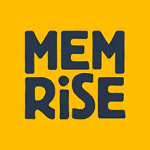
Price: Free ($$ for full version)
Summary: Memrise’s sole purpose is to help you memorize Spanish words.
There are different scenarios in the app and many lessons in each.
One lesson in each course typically helps you learn anywhere from 10-50 words, and each word includes audio, its English translation and often a video of a native person saying the word or phrase.
You learn the words by repeating and using them in different kinds of exercises like translation, choosing the right answer or flashcards.
Read our full Memrise review here.
| Pros | Cons |
|---|---|
| Options to learn Mexican or Castilian Spanish | Some user-created courses contain mistakes (check comments before using them) |
| Free courses created by Memrise and courses created by users | Not all courses and features available with the free version |
5. Best for Conversational Application: Pimsleur
Price: $$ (the first lesson is free)
Summary: Pimsleur is a very well-known learning method that focuses mostly on audio.
With a focus on conversational language skills, Pimsleur has traditionally been the audio course people listen to on the go.
Each lesson starts with a short audio dialogue that the whole lesson will revolve around. Each sentence gets dissected to the point of teaching you how to pronounce syllables.
You’re prompted to listen, repeat, listen and repeat again during the whole lesson.
Apart from the audio of the lessons, you also get exercises in the form of reading (to improve your pronunciation), flashcards (for review) and quizzes.
Read our complete review of Pimsleur Spanish here.
| Pros | Cons |
|---|---|
| You speak Spanish words and sentences from day one | All the explanations are in English |
| It allows you to learn Spanish hands-free | Recommended one lesson a day is not designed to get fast results |
6. Best for Everyday Spanish: MosaLingua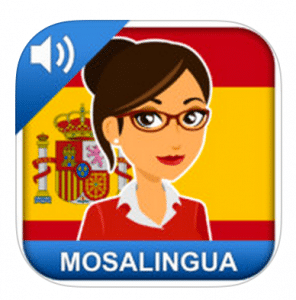
Price: $ (free trial available)
Summary: MosaLingua is designed to teach Spanish by focusing on learning the most common words and phrases using several different methods.
MosaLingua uses lots of learning techniques such as a spaced repetition system to calculate when you should next review a word to best memorize it.
I really enjoyed that it focused so much on the 3,000 most common words and phrases as that is really all you need.
There are distinct subcategories of words and phrases, so it’s very well organized and even includes recordings of native speakers.
| Pros | Cons |
|---|---|
| Lessons are adapted to your level and skills | The quality of some of the audio recordings is low |
| Access to a huge multimedia library and fully customizable flashcards | Each language offered has its own app on Android |
7. Best for Speaking Practice: Busuu
Price: Free ($ for premium)
Summary: Busuu is an online Spanish learning platform based on the CEFR (Common European Framework of Reference for Languages) levels.
In each lesson, you will have access to vocabulary, writing practice, speaking practice, voice recordings and a final review.
You’ll cover all four areas of language learning (reading, writing, speaking, listening), but the speaking practice is definitely the best part.
The free version is enough to get you to an advanced level, but it doesn’t include personalized lesson plans, grammar lessons or offline access.
See our full Busuu review here.
| Pros | Cons |
|---|---|
| It has a strong community of very active users | Some of the speakers aren't native |
| All major language skills are covered | Free version can't be personalized and doesn't include much grammar |
8. Best for Quick Study: Drops
Price: $ (five free minutes every day)
Summary: Drops’ goal is for their users to learn Spanish five minutes every day to reach fluency.
Drops is completely based on visual learning as it will give you new words and have you learn them through image matching and other gamified exercises.
There are dozens of topics you can learn about and you will have access to five free minutes a day unless you pay for the unlimited version.
Read our complete review of Drops here.
| Pros | Cons |
|---|---|
| You can learn both Mexican and Castilian Spanish | You only get five minutes of free practice every day |
| The app is perfect for kids and total beginners who are visual learners | There's no grammar at all, and the words are learned in isolation |
9. Best for Variety: LingQ
Price: $
Summary: LingQ aims to immerse you through entertaining authentic content and easy-to-comprehend learning materials.
This program exposes you to a wide range of Spanish learning materials including articles, interviews, podcasts, audiobooks and real-life conversations.
These materials come with transcripts, flashcards and vocabulary tools to go deeper into your studies.
You can interact with transcripts to look up words and save them as flashcards for later.
The app keeps track of how well you’ve learned each word, which words you’ve already mastered and how much vocabulary you’re learning each day.
Check out our full LingQ review here.
| Pros | Cons |
|---|---|
| Authentic Spanish content with built-in dictionary and learning tools | Clunky user interface |
| Covers all learning levels and a wide variety of topics | Little to no instruction in grammar, writing or speaking |
10. Best for Conversation Practice: Cudu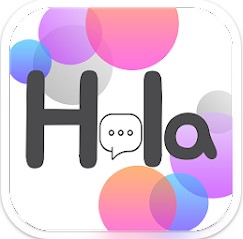
Price: Free
Summary: Cudu provides you with typical Spanish daily conversation practice in text form.
With this app, you can converse, listen, read and learn from dialogue-based lessons.
This approach can certainly assist with retention and learning in context.
It is best to have some basic Spanish knowledge with this one, but there are over 100 topics to choose from once you get started.
The app helps you get familiar with the “flow” of Spanish conversation and uses heaps of common expressions and idioms to help you learn the language.
| Pros | Cons |
|---|---|
| Teaches you Spanish in context with the help of dialogues | You won't be talking to a real Spanish speaker |
| Great conversation practice before talking to a native Spanish speaker | Best if you have some basic Spanish knowledge |
11. Best for Travelers: SpeakEasy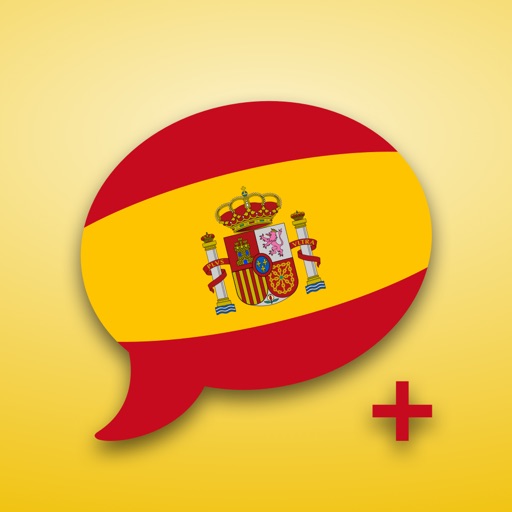
Price: $
Summary: SpeakEasy is essentially a travel-friendly phrasebook to take with you.
This super useful phrasebook is all you need if you’re planning a trip to any Spanish-speaking country.
SpeakEasy offers native recordings as a pronunciation guide for most words and phrases, so you’ll be able to copy these native recordings easily.
There are also flashcards available.
If you buy the app, you get all 900 phrases together with their native pronunciation in both Latin American and Castilian Spanish.
| Pros | Cons |
|---|---|
| Highly practical phrasebook with native audio pronunciation guides | Specifically created for English speakers, no other languages supported |
| All content in the app can be used offline | Doesn't teach grammar or include any other learning content |
12. Best for Gamified Learning: ClozeMaster
Price: Free ($ for pro subscription)
Summary: This app is mostly based on reading comprehension and game-based learning.
This app is based on cloze tests, which remove words from a passage and ask that the test-taker fills them in to test reading comprehension.
In terms of Spanish learning, this app is great for vocabulary building since you have to read closely and pay attention to context.
ClozeMaster uses a spaced repetition system that encourages language retention as your progress is ranked by the frequency of the words as they appear and your correct or incorrect responses.
| Pros | Cons |
|---|---|
| Thousands of sentences for Spanish practice, grouped by level | It can get a bit repetitive |
| Clozemaster Radio feature allows you to use the app hands-free | It's not a good app for complete beginners |
13. Best for Reading Practice: Beelinguapp
Price: Free (there are different subscription tiers $-$$)
Summary: This app is reading-based and allows you to read texts in your native language and Spanish at the same time.
You can also listen to recordings of the text by native Spanish speakers and highlight the text for playback. This is known as the “karaoke reading” function.
This option makes the reading a really immersive and engaging process. It’s also super helpful when it comes to learning pronunciation.
| Pros | Cons |
|---|---|
| Allows for real immersion | Mainly focuses on reading and listening |
| Side-by-side reading is a very effective way to see how a language works internally | Not much content for free |
14. Best for Language Help: HiNative
Price: Free
Summary: HiNative is a super fun app that functions in a similar way to an online chat app, but users ask native speakers questions related to language and grammar usage.
HiNative has a large user base, meaning your Spanish questions will almost definitely be answered.
I find this to be a great resource to ask questions related to the feel or sound of my sentences.
While I wouldn’t recommend this app as a central learning resource, it can be very useful to have in your back pocket when those inevitable Spanish learning questions pop up!
See our full review of HiNative here.
| Pros | Cons |
|---|---|
| It allows you to ask anything about the Spanish language and culture | Possibility of questions going unanswered |
| Users also have ratings to help you figure out the most reliable answers | No actual lessons or learning content |
15. Best for Visual Learners: Mondly
Price: Free ($ for different subscription tiers)
Summary: Mondly has great features for visual learning and allows you to learn Spanish in your native tongue.
While most language learning apps will only focus on English to Spanish translations, Mondly is a great option for other language speakers who want to learn Spanish.
Mondly offers plenty of pictures, audio and even a chatbot and virtual reality to help keep your learning engaging.
The lessons are very well structured and presented in a way that allows students to grasp new concepts as they go.
Read our complete Mondly review here.
| Pros | Cons |
|---|---|
| Chatbot and speech recognition features are out of this world | Sometimes there's too much going on |
| Allows you to learn Spanish in your native language | The advanced levels are rather intermediate |
16. Best for AI-Personalized Instruction: Lingualia
Price: Five free minutes a day ($$ for premium)
Summary: Lingualia is a complete AI-run platform that takes you through Spanish lessons in a well-designed sequence based on your level.
Lingualia offers units that range from the A1-B2 levels of the CEFR, and there are about 50 units per level.
Each unit is based on a theme and each lesson has a few components to it: dialogue, vocabulary, grammar, similar words and checkpoint exercises.
Outside the lessons, there is the challenge section, where you can “fight” either with the computer or another user in a quiz-like test.
There’s also an activities section, where you can practice your Spanish writing.
| Pros | Cons |
|---|---|
| Lesson materials will help you practice all major language skills | No content for C1 and C2 students |
| Synonyms and sample sentences provided for all new vocabulary | Only Castilian Spanish is included |
17. Best for Pronunciation: Speechling
Price: Free ($$ for a premium subscription )
Summary: This app has a definite process that focuses on developing your speaking skills.
Speechling works in five steps: Listen → Speak → Get feedback → Repeat → Achieve conversational fluency.
Speechling combines flashcards with speaking practice and enlists the help of native coaches to help you achieve conversational perfection one sentence at a time.
There are several topics available for all levels and you even have access to 35 coaching sessions per month and unlimited access to the whole Spanish curriculum for free.
| Pros | Cons |
|---|---|
| Audio from native Latin American and Castilian Spanish speakers | So many options that the app can be a bit overwhelming |
| You can hover your mouse over any word for grammar info | The user interface could be more intuitive |
18. Best for Learning Grammar: LingoDeer
Price: Free ($-$$ for different premium subscription tiers)
Summary: This app offers bite-sized sessions that really focus on pronunciation.
LingoDeer has several different topics available for several levels.
This app offers a superb pronunciation introduction, stories and a massive grammar guide.
A free account only includes a few units, but they’re offered in their entirety (including exercises, quizzes, one review mode, grammar tips and Stories).
See our full review of LingoDeer here.
| Pros | Cons |
|---|---|
| The grammar explanations for each unit are superb | Annoyingly similar to other big names in the industry |
| It includes high-quality native Spanish audio | Some words don't make sense in their units (first one includes the words for "boy," "girl" and "lawyer") |
19. Best for Spaced Repetition: Brainscape
Price: $$ (free decks available)
Summary: Brainscape is another great flashcard app that will let you learn over 14,000 Spanish words and expressions.
Created in an innovative way in which words are introduced according to usage, Brainscape uses spaced repetition to make sure you don’t forget what you’ve learned.
With a wide range of topics and recordings from native speakers, Brainscape is a great resource.
| Pros | Cons |
|---|---|
| Thousand of words and phrases ready to be learned | Only flashcards and multiple-choice practice in this app |
| Impressive decks for verbs, Medical Spanish, AP Spanish and GCSE Spanish | Premium access is needed for the official Spanish set of decks |
20. Best for General Translating: SpanishDict Translator
Price: Free (with in-app purchases)
Summary: This is one of the best apps for high-quality, direct translations.
SpanishDict lets you translate words, phrases and full sentences through three different translation tools at once, so you can be better assured of a translation’s accuracy.
In addition to high-quality translations, this app features a Spanish-English dictionary that contains details about usage, as well as sentence examples and a list of phrases that use the word.
SpanishDict Translator also includes a verb conjugator and a Word of the Day feature to help you learn new vocabulary.
The app even has lessons, exercises and quizzes to sharpen your Spanish skills.
| Pros | Cons |
|---|---|
| High-quality translations | There are ads in the free version |
| Additional learning features beyond translation | Grammar in longer translations can be off |
FAQs About The Best Apps to Learn Spanish
What is the best app for learning to speak Spanish?
If your main goal is to get better at speaking in Spanish, the best app for you would be one like Cudu, Busuu, Speechling or Pimsleur where the focus is on speaking and pronunciation.
What is the best app for learning Spanish for free?
Duolingo is likely the best app to learn Spanish if you want something completely free. There’s an option to upgrade, but most people find that the free version is enough. You can also complete the entire Duolingo course for free.
What is the best app for learning Spanish for beginners?
I recommend using a resource with a structured path for beginners, such as Duolingo, Busuu or LingoDeer, or resources that expose you to native content and speech early on, like FluentU and Pimsleur.
But ultimately, the best Spanish app for beginners is the one you will consistently use.
Now you have seen several different apps with different strengths and weaknesses. Choose which one works best for you!
Best of luck learning Spanish!
Download: This blog post is available as a convenient and portable PDF that you can take anywhere. Click here to get a copy. (Download)









